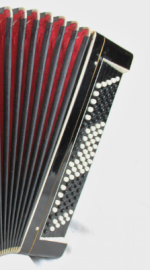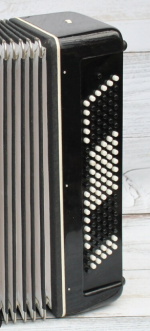stickista
Well-known member
I’ve come to the opinion that having piano-style white and black buttons on a CBA is almost completely for the benefit of the audience. The player navigates purely by touch (marked buttons) or muscle memory.
Bi-color on the other hand communicates to the audience, particularly those unfamiliar with CBA, at least the concept that the layout is somehow related to piano.
The only times I actually look at my hands is if I’m sitting piano-style at my CBA midi controller.
Only with uni-colored buttons have I had people remark that it looks like I’m playing a typewriter.
Bi-color on the other hand communicates to the audience, particularly those unfamiliar with CBA, at least the concept that the layout is somehow related to piano.
The only times I actually look at my hands is if I’m sitting piano-style at my CBA midi controller.
Only with uni-colored buttons have I had people remark that it looks like I’m playing a typewriter.
Last edited:


